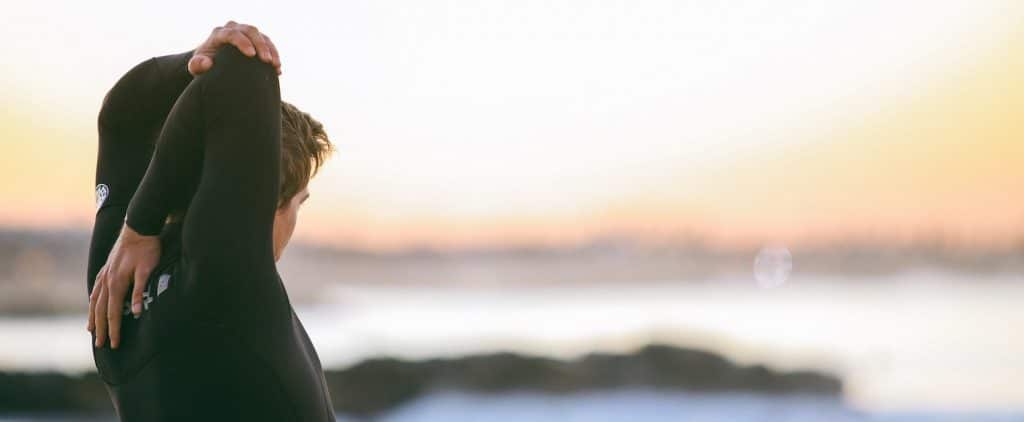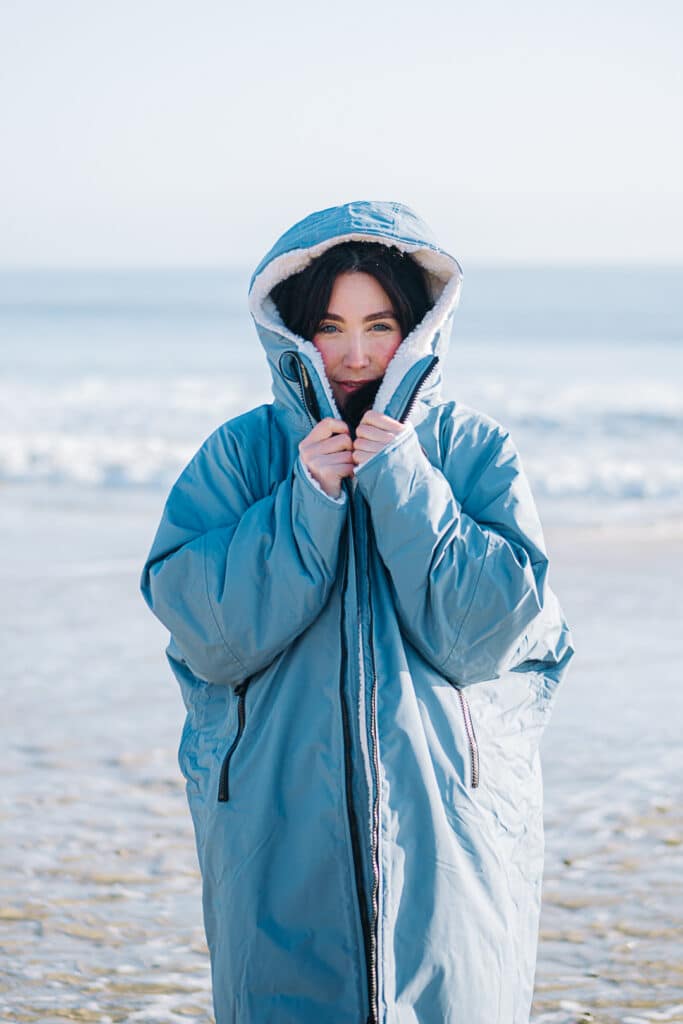Avoiding injury
Working in the outdoor industry does come with injury risks. As an Instructor, we spend many hours honing our skills to become proficient enough to teach others. The want to teach is derived from our passion for certain activities and the fact we enjoy partaking in them in our free time. We often push our limits, occasionally a bit too far and injury can be a frustrating result..
Sadly, pushing ourselves further and striving to be better, or even a simple misjudgment can lead to accident and ultimately injury. I have written this Outdoor Instructor’s Guide to Recovering from Injury very much talking from my own past experience and hope that the advice I can offer in this post will help others on their road to recovery.

Talking from experience…
The amount of screws and metalwork holding my skeleton together right now would rival the stock of a small builders merchant. I currently have 20 or so screws, 2 plates, 2 rods and a couple of pins in my body from a handful of different accidents and injuries… silly Shane.
Before I explain what my recovery looked like, to give you some context I would like to share the story of my most traumatic accident with you. Once upon a time, I was climbing near Plymouth up a not particularly difficult route.
As I was finishing the climb at a height of roughly 40 feet (12 metres), my foot slipped causing me to fall from the wall. Why did my foot slip, you ask? It could have been a number of reasons – it was my first time using new climbing shoes, the rock was a bit moist, I was over confident in my ability, or maybe it could have been all of the above.
I have come to terms with the fact that it doesn’t really matter what caused me to fall that day. But rather it is important to learn from what happened as a result of falling, dealing with the injury and trying to improve my climbing ability going forward.
I was Trad climbing at the time which, for those who do not know, involves placing your own protection into cracks in the rock to keep you safe in the event of a fall.
I was finding this particular route to be quite ‘run out’ towards the top, meaning I was struggling to find good places to wedge the small lumps of metal called ‘nuts’ to attach my rope to.
Rather than spending more time trying to find a better place for my gear, I wedged a few dubious pieces in and pushed onto the finish as I was so close to the top. Needless to say when I slipped these pieces did not hold my weight and resulted in me crashing down the cliff.
I felt the ping of the highest two nuts ripping out of position and knew that the next nut (which ironically was actually well placed and probably enough to hold me) was too low down to help.
I was convinced I was dead but once I had stopped falling, I was very pleasantly surprised to be conscious. I hopped up to my feet to brush down and take stock of any injury. I figured something would surely be poking out of somewhere. But again, to my great surprise, nothing! That’s when the pain started kicking in and things got real.
My climbing partners forced me back to the floor to await the arrival of almost every emergency service in the area. Luckily a paramedic arrived fairly promptly, assessing the injury and dosing me with drugs which made the wait before being carried to the ambulance and ultimately hospital all the more bearable. All of the emergency services who helped me that day were just amazing and without them I’m not sure how I would have got to safety. I can’t praise them enough.
Over the next few days I had two surgeries; one fusing five of my vertebrae together to support the three lumber I had broken and another to stabilise a broken ankle. On top of this I had also broken a metatarsal and cracked the heel on my other foot – an injury not to be forgotten.
Within three days of arriving at hospital I was able to stand using crutches and was told I could leave once I was able to walk up and down stairs unaided. No easy task with one leg in a cast and the other foot in agony due to the crack in the heel and all the time putting my body weight through my newly broken and screwed together spine whilst attempting to support myself on crutches.
After a few more days of trying, I managed it and was discharged almost exactly, to the hour, a week after arriving. I was in such a hurry to leave that my Dad bundled me into the back of his self converted camper van rather than waiting for the hospital to arrange proper transportation. I was given a time frame of 2 years before I would be fully recovered.
Tackling anxiety and depression
This is not the only accident and recovery period I have been through, so as you can imagine I have spent a lot of time on that long old road to recovery, working out how to get better without loosing my mind. A traumatic event is just that, traumatic. Therefore accidents and injuries can often be accompanied by depression and anxiety, and learning how to battle these emotions is essential.
A natural thought process is usually along the lines of: ‘How long until I can be back on my feet?’… ‘will I ever climb again?’… ‘am I ever going to recover from this?’… ‘My life will never be the same’. These are dangerous thoughts with the ability to suck a person down into constant worry and some extremely dark places.
In my experience, these thoughts can persist for very long periods of time throughout recovery. Try to always look past the recovery period, no matter how long it might be (I have been told two years with minimal activity!).
Reframe your negative thoughts to a more positive and balanced perspective: ‘How long until I will be back on my feet?’… ‘When I am recovered and can climb again, I can start by going to a climbing gym’… ‘what steps can I take to help myself recover?’… ‘My life will not be the same while I recover, but in time I will be able to get back to enjoying the activities I love’.
Being someone who loves spending time outdoors, I am particularly prone to having low moods at the prospect of being laid up for an extended amount of time. The way I have coped has been to focus on achievable goals to keep my brain engaged.
At one point or another, I have turned my attention to drawing, carving, puzzles, bird watching and researching various topics that interest me. This might sound pretty dull compared to your usual climbing, paddle boarding and snowboarding everyday but it was enough to help get me through and keep negative thoughts to a minimum.
Get yourself moving
Unfortunately you cannot just sit on our bums indefinitely doing puzzles waiting to return to good health, which brings me on to the next point. This is a touchy subject and will be different depending on the type of injury you have suffered, however I personally have found that to keep moving, however small that might be, helps massively with recovery.
When I broke my back, I set myself little physical challenges like being able to sit bolt upright in bed without using my hands, using solely my core to prevent my muscles from seizing up. I also often went for little walks rather than lying down and resting all day. I can honestly say that I feel these small things had a real impact on my overall recovery.
After a big injury it’s easy to lose motivation and wait the recovery time out in bed eating yourself silly. This approach will most certainly lead to huge amounts of muscle loss and cause your body to seize up. Just because one part… or a couple parts of your body are broken doesn’t mean we have to neglect the rest. Getting some form of physical exercise into your routine whilst recovering will increase your blood flow and circulation, which will ultimately help with the healing process.

Physiotherapy and Pain Management
Recovering from injury is never going to be pain free. No matter the circumstances, there will be pain in some way, shape or form. It is our body’s way of telling us that something isn’t right, and understanding what that something might be is very important. This is why it is important to arrange regular visits to a qualified physiotherapist.
Injuries can take on all manner of variation so seeking advice from a professional will help you to understand and manage your pain. They will be able to recommend certain exercises and movements (those that are beneficial and those to avoid) to aid recovery and get you back to full strength.
After a shoulder surgery back in 2012, I spent two months with my arm in a sling. Although I kept the rest of my body moving throughout recovery, the shoulder joint had completely seized up.
I had almost no strength or range or movement left and so getting physio meant that I experienced a lot of different pains. A sharp stabbing pain when performing my exercises would tell me ‘woah too far buddy’ and I would know that I was pushing it a little too far.
After physio, a dull pain or dull ache would normally set in, letting me know that I had succeeded in stressing the injured area enough and a sign that my muscles are rebuilding and gaining flexibility back.

A Healthy Diet
Physio alone is not the only way to assist with a swift recovery. After an injury the body is not only working to keep the natural processes running but in the background it is also trying to heal any bone and/or tissue damage.
It is therefore working much harder than normal so will require more fuel. The food we consume is the fuel our body needs to do this and so your food choices can either help or hinder your rehabilitation.
That doesn’t mean to say you should order in lots of junk or processed food like a leaning tower of frozen pizzas or a mountain of kebabs, but rather plenty of fresh, nutritious, protein and calcium rich food which will help you to recover and regain your strength.
Your immune system is heavily dependent on such foods and it is essential that it is looked after so that it can effectively assist in your recovery. https://www.nhs.uk/live-well/eat-well/food-guidelines-and-food-labels/the-eatwell-guide/
Getting back on the horse
The end goal! Getting back to activity is what it’s all about and most likely all you’ve been thinking about during your recovery journey. It’s important to note that you should not return to your sport or activity until your pain, swelling and stiffness has improved a lot. Pushing yourself too soon could potentially make your recovery time even longer or your injury worse! Slow and steady wins the race…
When you know that you are strong enough to ‘get back on the horse’, take it slow and build back up gradually. Although you may have been seriously pushing the climbing grades or going hard on the water before your injury, take a good few large steps back for a while until you know where your strength and head is at.
Try to avoid big committing activities without easy retreats. For example, pop out on a paddle board close to shore in gentle conditions so that you can bail out easily if you begin to feel discomfort. It’s OK to try again another time if you’re not feeling ready. I
t is nicer having the safety net there at first until you know you are 100% ready. What is not good is trying to match your pre-injury self and getting yourself re-injured and landing yourself back to square one.
It pays to have Insurance
You never plan to have an accident and it seems like such a chore arranging for and paying for something which you hope you will never have to use. I cannot stress enough how important it is to get insurance. It is most definitely an asset for when things do, unfortunately, go wrong.
It is especially important when you are not in the UK. One of my injuries happened overseas – I somehow managed to body slam a rock whilst snowboarding off-piste. Another of my least favourite moments. My collar bone was shattered into five pieces and having insurance was vital to my hospitalisation and care.
The insurance company covered all of my hospital fees, further surgeries, prescriptions, home visit nurse appointments and then it smashed it out of the park by flying me back to the UK, arranging assistance in the airport and a taxi to my very own front door. It was a lifeline for me during this time.
I was lucky enough at this time to be working for a Company that provided medical insurance for all of its staff members. It is not uncommon for employers to make sure their staff are covered, especially in the outdoor industry. So when you are looking for work, make sure you ask the question so you know whether you should insure yourself or not. At Land and Wave all of our full time staff are offered health insurance!
If you happen to be injured and have found yourself reading this post, I wish you a speedy recovery and hope you are able to take something away from this guide to recovering from injury!
NB. We always recommend to our instructors have personal injury insurance to cover themselves for their adventures – you can find out more here https://www.thebmc.co.uk/modules/insurance/
To find out more about Outdoor Instructor Training and gaining qualifications to keep you and others safe, take a look at our Outdoor Instructor Training Course https://landandwave.co.uk/outdoorinstructortraining/





